-
 Bitcoin
Bitcoin $115200
-2.68% -
 Ethereum
Ethereum $3601
-5.16% -
 XRP
XRP $3.035
-2.96% -
 Tether USDt
Tether USDt $0.9997
-0.04% -
 BNB
BNB $764.5
-5.43% -
 Solana
Solana $168.1
-5.92% -
 USDC
USDC $0.9998
-0.02% -
 Dogecoin
Dogecoin $0.2090
-4.80% -
 TRON
TRON $0.3272
-0.49% -
 Cardano
Cardano $0.7306
-5.00% -
 Hyperliquid
Hyperliquid $39.16
-12.22% -
 Stellar
Stellar $0.3967
-4.96% -
 Sui
Sui $3.566
-5.95% -
 Chainlink
Chainlink $16.55
-6.57% -
 Bitcoin Cash
Bitcoin Cash $552.3
-3.90% -
 Hedera
Hedera $0.2516
-4.69% -
 Avalanche
Avalanche $21.99
-5.75% -
 Toncoin
Toncoin $3.621
-0.28% -
 Ethena USDe
Ethena USDe $1.000
-0.03% -
 UNUS SED LEO
UNUS SED LEO $8.951
0.02% -
 Litecoin
Litecoin $105.9
-3.59% -
 Shiba Inu
Shiba Inu $0.00001232
-5.00% -
 Polkadot
Polkadot $3.640
-5.55% -
 Uniswap
Uniswap $9.048
-7.03% -
 Monero
Monero $301.8
-1.51% -
 Dai
Dai $0.9999
-0.01% -
 Bitget Token
Bitget Token $4.334
-3.66% -
 Pepe
Pepe $0.00001064
-6.17% -
 Cronos
Cronos $0.1367
-5.78% -
 Aave
Aave $259.2
-4.59%
How does a blockchain node reduce latency? How does it increase transaction speed?
Blockchain nodes reduce latency and boost transaction speed through optimized network topology, efficient data propagation, and advanced consensus mechanisms.
May 16, 2025 at 11:49 am
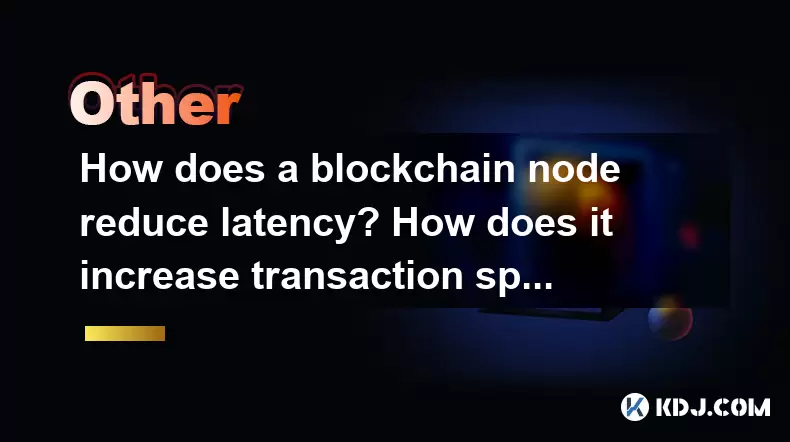
Introduction to Blockchain Nodes
In the world of cryptocurrencies, blockchain nodes play a pivotal role in maintaining the integrity and efficiency of the network. A blockchain node is essentially a computer that participates in the blockchain network by validating and relaying transactions. Understanding how a blockchain node reduces latency and increases transaction speed is crucial for anyone involved in the crypto space. This article delves into the mechanisms and techniques used by nodes to enhance the performance of blockchain networks.
Reducing Latency in Blockchain Nodes
Latency in blockchain networks refers to the time it takes for a transaction to be processed and confirmed. Reducing latency is essential for improving the user experience and the overall efficiency of the network. Here are the primary ways blockchain nodes achieve this:
Optimized Network Topology: Nodes can be strategically placed to minimize the distance data needs to travel. By using a well-designed network topology, nodes can ensure that data packets reach their destination more quickly. For instance, having nodes in geographically diverse locations can help reduce the overall latency of the network.
Efficient Data Propagation: Nodes use various protocols to propagate data efficiently. For example, the Graphene protocol used by some blockchain networks allows for faster data transmission by compressing and relaying transaction data in a more streamlined manner. This reduces the time it takes for transactions to spread across the network.
Advanced Consensus Mechanisms: Some blockchain networks employ consensus mechanisms that are designed to minimize latency. For instance, Delegated Proof of Stake (DPoS) allows a smaller set of nodes to validate transactions, which can significantly reduce the time needed for consensus and, consequently, the overall latency.
Caching and Pre-Validation: Nodes can implement caching mechanisms to store frequently accessed data, reducing the need to fetch information repeatedly. Additionally, pre-validating transactions before they are broadcasted can help streamline the validation process, further reducing latency.
Increasing Transaction Speed in Blockchain Nodes
Transaction speed, or throughput, refers to the number of transactions a blockchain network can process per second. Increasing transaction speed is vital for scaling blockchain networks to handle a higher volume of transactions. Here’s how nodes contribute to this:
Parallel Processing: Some blockchain networks allow nodes to process multiple transactions simultaneously. This parallel processing capability can significantly increase the overall transaction speed. For example, sharding divides the network into smaller segments, each capable of processing transactions independently.
Optimized Transaction Validation: Nodes can be optimized to validate transactions more quickly. This involves streamlining the validation algorithms and reducing the computational overhead. For instance, using more efficient cryptographic algorithms can speed up the validation process.
Batching Transactions: Nodes can group multiple transactions into a single batch, which can be processed and validated as a unit. This batching technique reduces the overhead associated with processing individual transactions, thereby increasing the overall transaction speed.
Layer 2 Solutions: Some blockchain networks employ layer 2 solutions like Lightning Network for Bitcoin or Plasma for Ethereum. These solutions allow transactions to be processed off the main blockchain, which can significantly increase transaction speed by reducing the load on the primary network.
The Role of Node Configuration
The configuration of a blockchain node also plays a critical role in reducing latency and increasing transaction speed. Proper configuration ensures that nodes operate at peak efficiency. Here are some aspects of node configuration that can impact performance:
Hardware Specifications: The hardware on which a node runs can significantly affect its performance. Using high-performance CPUs, ample RAM, and fast storage solutions can help nodes process transactions more quickly and reduce latency.
Software Optimization: The software running on the node must be optimized for performance. This includes using the latest versions of blockchain software, which often include performance enhancements. Regular updates and patches can help maintain optimal performance.
Network Settings: Proper network settings, such as optimizing bandwidth and reducing packet loss, can help nodes communicate more efficiently with other nodes in the network. This can lead to faster data propagation and reduced latency.
The Impact of Node Types on Performance
Different types of nodes can have varying impacts on the performance of a blockchain network. Understanding the role of each node type is essential for optimizing network performance. Here are the main types of nodes and their contributions:
Full Nodes: Full nodes store the entire blockchain and validate all transactions. While they are crucial for maintaining the integrity of the network, they can also be resource-intensive. Optimizing full nodes to handle high transaction volumes can help reduce latency and increase transaction speed.
Light Nodes: Light nodes, or SPV (Simplified Payment Verification) nodes, do not store the entire blockchain but rely on full nodes for validation. They are less resource-intensive and can help increase the overall scalability of the network by reducing the load on full nodes.
Validator Nodes: In networks that use consensus mechanisms like Proof of Stake (PoS) or DPoS, validator nodes play a crucial role in validating transactions. Efficient validator nodes can help reduce latency by quickly reaching consensus on the validity of transactions.
Practical Steps to Optimize Node Performance
For those looking to optimize the performance of their blockchain nodes, here are some practical steps to follow:
Choose the Right Hardware: Invest in high-performance hardware to ensure your node can handle the computational demands of processing transactions.
Regular Software Updates: Keep your node software up to date to benefit from the latest performance enhancements and security patches.
Optimize Network Settings: Ensure your node's network settings are optimized for low latency and high throughput. This may involve working with your internet service provider to reduce packet loss and optimize bandwidth.
Implement Caching: Use caching mechanisms to store frequently accessed data, reducing the need to fetch information repeatedly and thus lowering latency.
Utilize Layer 2 Solutions: If available, leverage layer 2 solutions to offload transaction processing from the main blockchain, thereby increasing transaction speed.
Monitor and Analyze Performance: Use monitoring tools to track the performance of your node and identify areas for improvement. Regular analysis can help you fine-tune your node's configuration for optimal performance.
FAQs
Q: How does the location of a node affect its performance?
A: The location of a node can significantly impact its performance. Nodes located closer to other nodes in the network can experience lower latency due to reduced data travel time. Additionally, being in a region with robust internet infrastructure can further enhance performance.
Q: Can the type of blockchain affect how nodes reduce latency and increase transaction speed?
A: Yes, the type of blockchain can influence how nodes operate. For instance, public blockchains like Bitcoin may have different performance characteristics compared to private or consortium blockchains, which can be optimized for specific use cases.
Q: Are there any risks associated with optimizing nodes for speed and latency?
A: Optimizing nodes for speed and latency can sometimes come at the cost of security. For example, using less secure consensus mechanisms to reduce latency might make the network more vulnerable to attacks. It's essential to balance performance optimizations with security considerations.
Q: How does node synchronization impact transaction speed?
A: Node synchronization, or the process of ensuring all nodes have the latest state of the blockchain, can impact transaction speed. If nodes are out of sync, it can lead to delays in transaction validation and propagation. Ensuring efficient synchronization mechanisms can help maintain high transaction speeds.
Disclaimer:info@kdj.com
The information provided is not trading advice. kdj.com does not assume any responsibility for any investments made based on the information provided in this article. Cryptocurrencies are highly volatile and it is highly recommended that you invest with caution after thorough research!
If you believe that the content used on this website infringes your copyright, please contact us immediately (info@kdj.com) and we will delete it promptly.
- FTX Token's Wild Ride: FTT Drop Amidst Creditor Repayment Buzz
- 2025-08-02 01:30:12
- Navigating the Crypto Market: Bitcoin, Trader Experience, and Avoiding the Noise
- 2025-08-02 00:50:12
- Deep Agents, AI Task Management, and Evolution AI: A New Era?
- 2025-08-02 00:50:12
- SPX6900, BlockDAG, and Miner Sales: A New York Minute on Crypto Trends
- 2025-08-01 23:30:15
- BlackRock, XRP ETF, and Ripple: Is the Perfect Storm Brewing?
- 2025-08-01 22:50:11
- Solana ETF Momentum Builds: Will SOL Join the Institutional Party?
- 2025-08-02 00:10:15
Related knowledge

What is the difference between a blockchain and a database?
Aug 01,2025 at 09:36pm
Understanding the Core Structure of a BlockchainA blockchain is a decentralized digital ledger that records data in a series of immutable blocks linke...
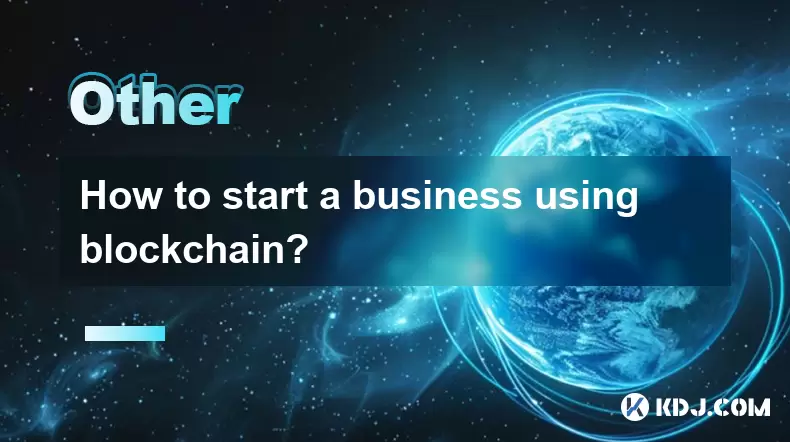
How to start a business using blockchain?
Jul 28,2025 at 12:36am
Understanding the Basics of Blockchain TechnologyBefore diving into the process of starting a business using blockchain, it's crucial to understand wh...
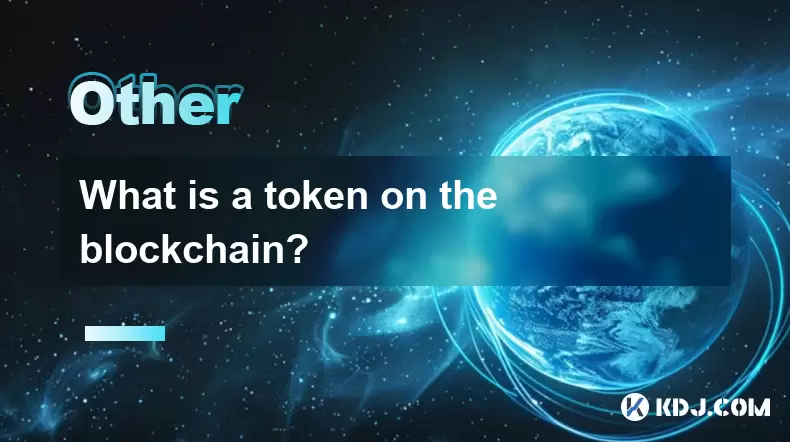
What is a token on the blockchain?
Jul 21,2025 at 07:00am
Understanding the Concept of a TokenIn the realm of blockchain technology, a token is a digital representation of an asset or utility that exists on a...
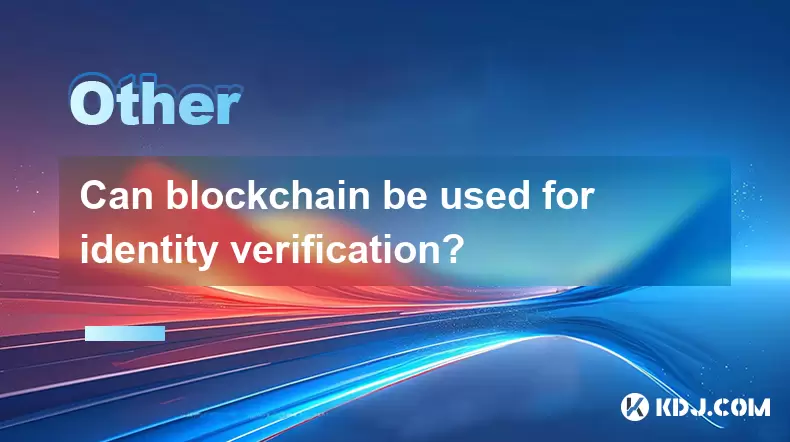
Can blockchain be used for identity verification?
Jul 18,2025 at 02:14pm
Understanding Identity Verification in the Digital AgeIn the modern digital landscape, identity verification has become a critical component for ensur...
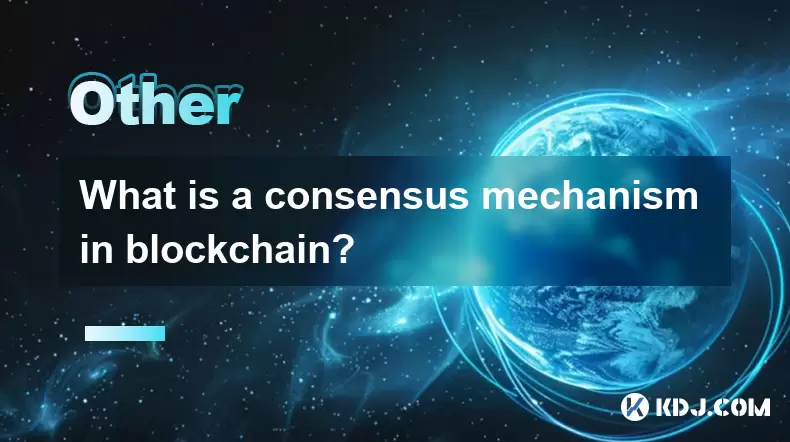
What is a consensus mechanism in blockchain?
Jul 21,2025 at 03:01am
Understanding the Basics of Consensus MechanismsA consensus mechanism is a critical component of any blockchain network. It refers to the process by w...
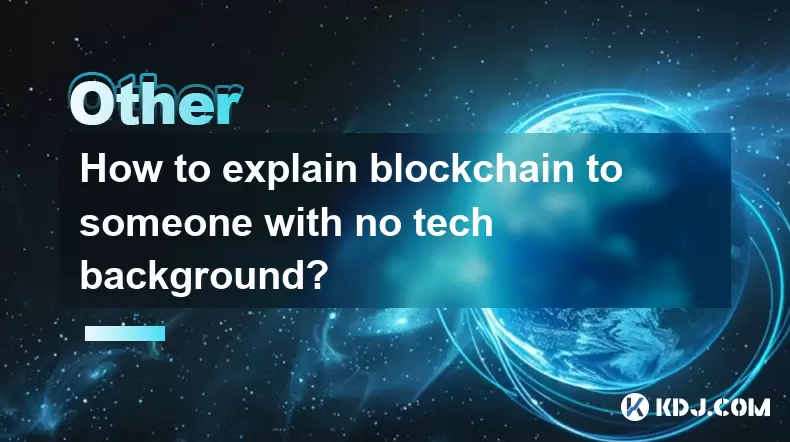
How to explain blockchain to someone with no tech background?
Jul 18,2025 at 11:08pm
Understanding the Basics of BlockchainTo explain blockchain to someone with no tech background, it's essential to start with simple analogies and avoi...

What is the difference between a blockchain and a database?
Aug 01,2025 at 09:36pm
Understanding the Core Structure of a BlockchainA blockchain is a decentralized digital ledger that records data in a series of immutable blocks linke...

How to start a business using blockchain?
Jul 28,2025 at 12:36am
Understanding the Basics of Blockchain TechnologyBefore diving into the process of starting a business using blockchain, it's crucial to understand wh...

What is a token on the blockchain?
Jul 21,2025 at 07:00am
Understanding the Concept of a TokenIn the realm of blockchain technology, a token is a digital representation of an asset or utility that exists on a...

Can blockchain be used for identity verification?
Jul 18,2025 at 02:14pm
Understanding Identity Verification in the Digital AgeIn the modern digital landscape, identity verification has become a critical component for ensur...

What is a consensus mechanism in blockchain?
Jul 21,2025 at 03:01am
Understanding the Basics of Consensus MechanismsA consensus mechanism is a critical component of any blockchain network. It refers to the process by w...

How to explain blockchain to someone with no tech background?
Jul 18,2025 at 11:08pm
Understanding the Basics of BlockchainTo explain blockchain to someone with no tech background, it's essential to start with simple analogies and avoi...
See all articles

























































































